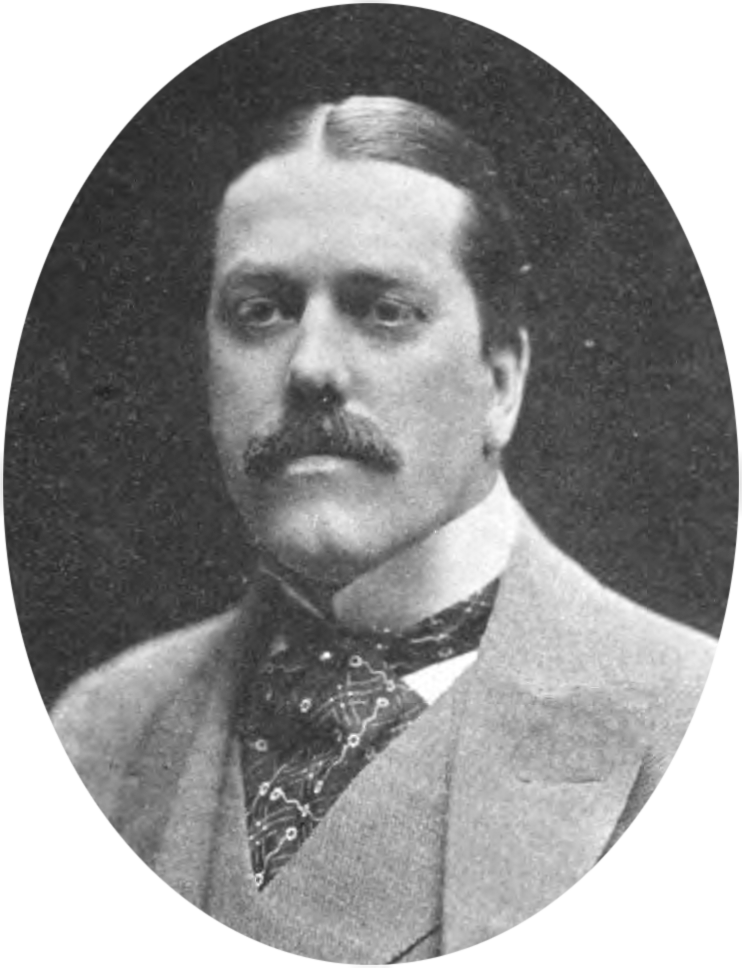Orchids were notably one of the biggest sensations at the Paris Exposition Universelle of 1889. These were not your ordinary garden variety orchids, instead they were finely crafted jewels from the hands of talented artisan and designer Paulding Farnham for Tiffany & Co.
The innovator of one of Tiffany & Co.’s most iconic jewels, Farnham showed tremendous artistic talent as a child and his uncle, Charles Thomas Cook took note. Cook was vice president and later president of Tiffany & Co. and confidant to Charles Lewis Tiffany. He enrolled Farnham, who was born in 1859 in New York City, in the “Tiffany School” which was the studio of Tiffany’s chief designer Edward C. Moore. The school emphasized drawing and modeling, especially anything found in nature. After Farnham completed his schooling in 1887 he became Moore’s assistant.
Making Orchids
That same year, Tiffany & Co. was preparing for the Paris Exposition Universelle of 1889 and Moore appointed Farnham to create the jewelry collection that would be displayed at the event. As part of the jewelry collection to be presented at the Expo, Farnham created a series of 24 orchids of different species based on the real flowers. Another big name at Tiffany & Co. lent a helping hand to the project: George F. Kunz, who was the chief gemologist. Kunz supplied Farnham with the spectacular gems that Tiffany was known for, while Moore shared an enameling process that he had developed with the young designer..

Orchid flowers were first introduced in the United States around 1837 and it didn’t take long for their popularity to blossom. As the 1800s progressed, gardening and growing hothouse flowers was a favorite past-time. It was an antidote to the fast paced tempo of the Industrial Revolution and its disconnect from nature and rural life. Wealthy people on both sides of the Atlantic raised various species of orchids as a hobby that flourished well into the early years of the 1900s.
The Tiffany & Co. orchids are mini masterpieces of art. Real orchids were cast in gold and then meticulously hand enameled to replicate the original flower. Designed as brooches, the orchids were on view at the Tiffany store, which at the time was located in New York’s Union Square, for two weeks before being sent to the Paris Exposition Universelle of 1889. The orchids were a stunning success earning a Gold Medal for Tiffany & Co. Jewelry Designs. Press in Europe and the U.S. sang the praises of Farnham and his orchids. He was only 29 years old at the time.
After the spectacular success of the orchids, Farnham added more varieties of the flower to the collection in 1890. Railroad magnate, financier and speculator Jay Gould, who avidly cultivated hothouse orchids collected several of the brooches not to be worn, but to be permanent reminders of the flora he so admired.
Not too many of the orchids were made and today they are very collectible due to their rarity and amazing fabrication. When the occasional orchid shows up at an auction or elsewhere, the price can soar well into the hundreds of thousands of dollars.
More Accolades
In 1891, after the death of Moore, Farnham who was the protégé of the firm’s founder Charles Lewis Tiffany, became head jewelry designer. It was a good move, Farnham went on to design pieces that would garner gold medals at the World’s Columbian Exposition held in Chicago in 1893, Paris Exhibition of 1900 and the Buffalo Pan-American Expo in 1901.
Farnham’s position was usurped in 1902 when Louis Comfort Tiffany, son of the firm’s founder, Charles Lewis Tiffany, took over the company after the death of his father. Louis Comfort Tiffany was a design prodigy in his own right and a leader in the Art Nouveau design movement. The two clashed creatively and in 1908, Farnham left Tiffany & Co., after earning more awards and accolades for the firm than any other designer, establishing the jewelry retailer as a leader in American jewelry design for the last ten years of the 1800s. Farnham’s sketches and other creative materials were stored in the Tiffany & Co. silver factory in Belleville, New Jersey and were soon forgotten.
The Later Years
After he left Tiffany & Co., Farnham’s life went in an entirely different direction. He moved to the west coast where he pursued some unsuccessful mining ventures, along with more successful painting and sculpting projects, until his death in 1927 in California. However, Farnham’s fabulous orchid brooches live on as a reminder of his remarkable artistic talent.
Featured image (top of page): Oncidium Orchid Brooch, gold, silver, diamond, ruby, emerald and enamel, signed Tiffany & Co. New York, circa 1889-1896, designed under the supervision of Tiffany’s chief jewelry designer G. Paulding Farnham. The design is inspired by the Oncidium genus of orchids found in tropical and sub-tropical parts of the Americas. These New World orchids are often referred to as tiger orchids or “dancing ladies”.
Authored by Amber Michelle
